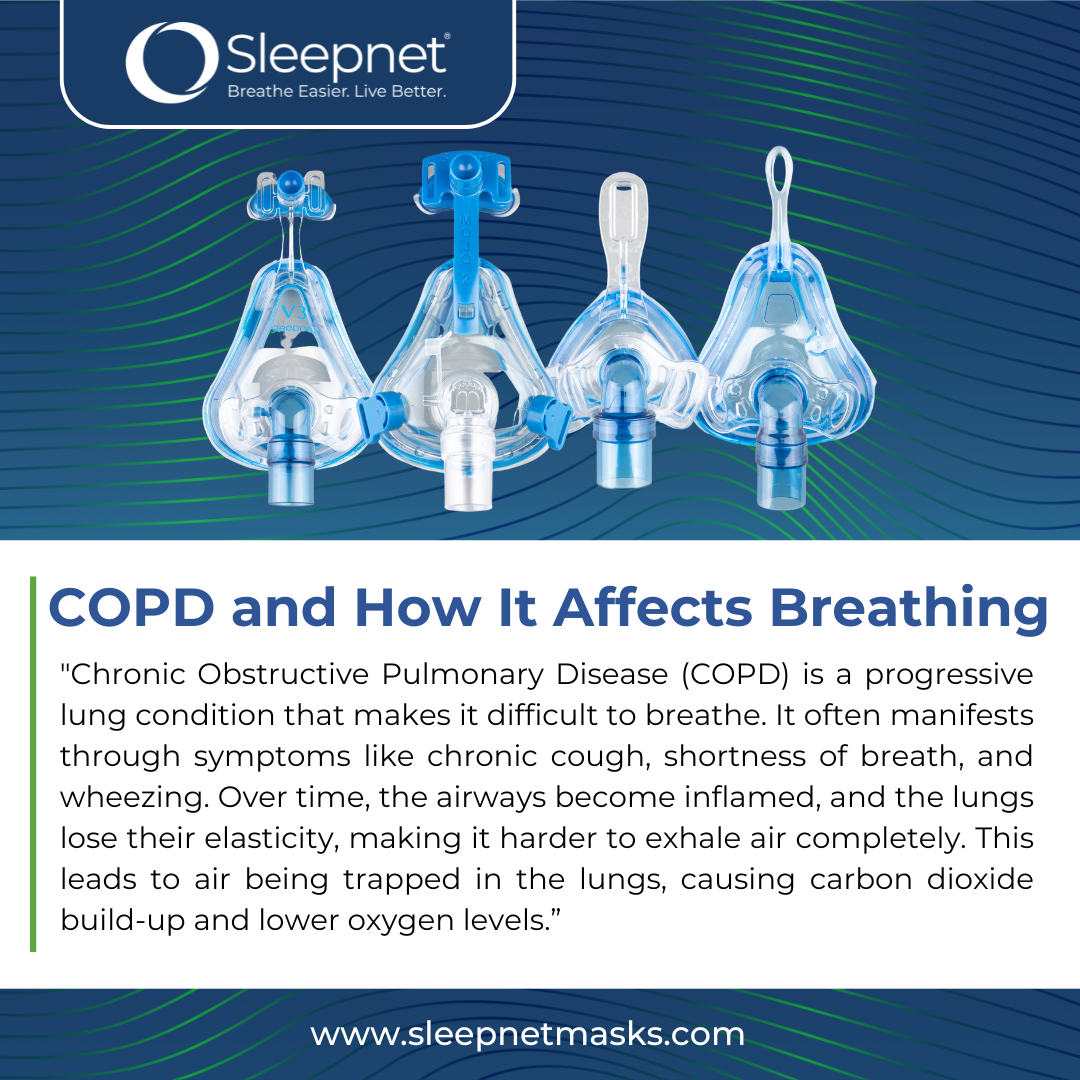COPD and How It Affects Breathing
Chronic Obstructive Pulmonary Disease (COPD) is a progressive lung condition that makes it difficult to breathe. It often manifests through symptoms like chronic cough, shortness of breath, and wheezing. Over time, the airways become inflamed, and the lungs lose their elasticity, making it harder to exhale air completely. This leads to air being trapped in the lungs, causing carbon dioxide build-up and lower oxygen levels. As a result, many patients find even simple tasks to be exhausting.
According to the Global Initiative for Chronic Obstructive Lung Disease (GOLD), approximately 328 million people worldwide were diagnosed with COPD in 2020, and it remains a growing concern. In fact, COPD is now the third leading cause of death globally, with around 3.23 million deaths annually attributed to the disease.
Challenges Faced by COPD Patients
One of the primary challenges for COPD patients is the difficulty in managing breathlessness, which tends to worsen as the disease progresses. Beyond the physical symptoms, patients often experience anxiety due to breathing difficulties and fatigue caused by lack of oxygen. Exacerbations, or flare-ups, can be particularly debilitating, often requiring hospitalization.
Another major challenge is managing carbon dioxide levels. When the lungs are unable to expel air effectively, carbon dioxide can build up, leading to severe complications such as respiratory failure (LPT Medical 2023, COPD and CO2 Retention).
How CPAP Therapy May Help COPD Patients
While Continuous Positive Airway Pressure (CPAP) therapy is typically associated with treating sleep apnea, research suggests that it can also be beneficial for some individuals with COPD, especially during sleep. CPAP therapy helps by delivering a steady stream of air pressure that keeps the airways open, allowing easier breathing. This can result in:
- Improved Oxygenation: By helping to keep the airways open, CPAP allows more oxygen to reach the lungs, which is crucial for managing breathlessness and maintaining oxygen saturation levels (NIH 2022, CPAP).
- Reduction of Carbon Dioxide Build-Up: The steady pressure can prevent the collapse of smaller airways, which may help reduce carbon dioxide retention and improve lung function over time.
- Alleviation of Nighttime Symptoms: COPD symptoms can often worsen at night, leading to poor sleep quality. CPAP therapy can help alleviate nighttime breathlessness, leading to fewer awakenings and improved rest (Sleep Foundation 2023, COPD and Difficulty Breathing).
The Importance of a Good Mask Fit
The success of CPAP therapy often depends on having a well-fitting mask. Poorly fitting masks can cause air leaks, reducing the effectiveness of the treatment and causing discomfort. A secure seal, tailored to the contours of the face, can ensure proper airflow while maximizing comfort during sleep. For patients with COPD, comfort is essential for therapy adherence, as discomfort may discourage regular use.
Conclusion
COPD presents a wide array of challenges, especially when it comes to managing breathing and ensuring proper oxygenation. CPAP therapy, when used appropriately, can help support some individuals with COPD by keeping airways open, improving oxygenation, and alleviating symptoms during sleep. While it’s important to discuss with a healthcare provider what treatment options are best, ensuring a comfortable and effective CPAP experience is critical for those who may benefit from it.



